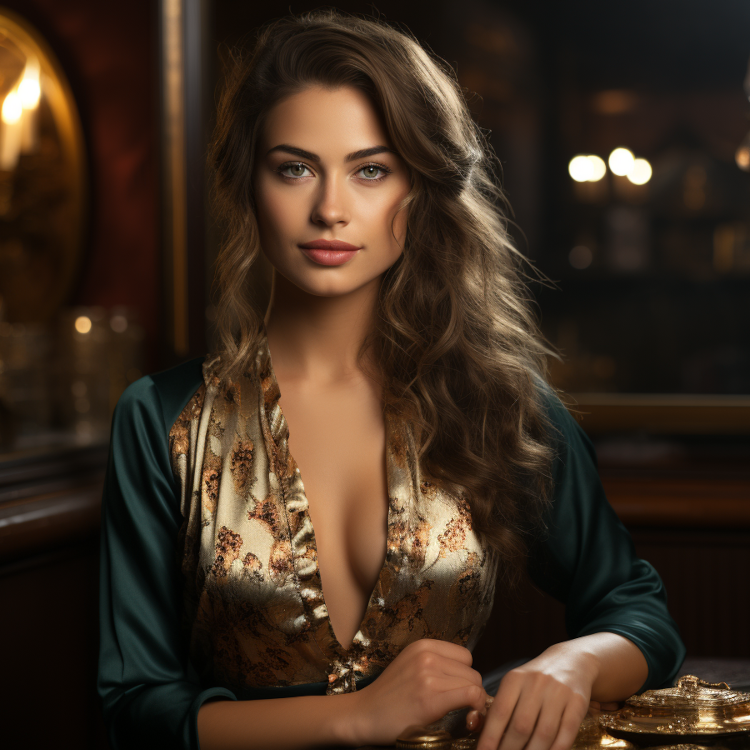


Art galleries and exhibitions serve as vibrant hubs for cultural expression and creativity. Whether you're a seasoned art enthusiast or a novice exploring the world of visual arts, navigating these spaces can be both exciting and enriching. In this article, we will delve into tips and insights that will help you make the most out of your art gallery experience.
Research Before You Go:
Before heading to an art gallery or exhibition, take some time to research the featured artists, themes, or movements. Understanding the context and background can significantly enhance your appreciation of the artwork on display. Many galleries provide online previews or catalogs that you can explore beforehand.
Open Your Mind to Diverse Styles:
Art comes in a myriad of styles and forms. Be open-minded and embrace the diversity of artistic expression. Don't limit yourself to specific genres or periods. Explore everything from traditional paintings to avant-garde installations; you might discover a new favorite artist or style.
Engage with the Curatorial Narrative:
Art exhibitions are often curated with a specific narrative or theme in mind. Pay attention to how the artworks are arranged and the story they collectively tell. Curators invest time in creating a cohesive experience, and understanding their perspective can deepen your connection to the art.
Attend Gallery Talks and Guided Tours:
Many galleries offer guided tours or talks by curators and artists. Seize these opportunities to gain insights directly from the creative minds behind the artworks. Ask questions, share your thoughts, and engage in discussions to enhance your understanding of the pieces on display.
Respect the Space and Silence:
Art galleries are spaces for contemplation and reflection. Keep noise to a minimum, avoid using your phone loudly, and be mindful of other visitors. Silence allows for a more immersive experience, enabling you to connect with the art on a deeper level.
Take Your Time:
Art is meant to be savored. Rushing through an exhibition may cause you to miss subtle details and nuances in the artwork. Take your time to absorb the textures, colors, and emotions conveyed by each piece. Pause, reflect, and let the art speak to you.
Document with Respect:
While capturing memories with photographs is common, be respectful of the gallery's rules regarding photography. Some exhibitions may have restrictions to protect the artworks. If allowed, take photos discreetly without disturbing the viewing experience for others.
Support Emerging Artists:
Keep an eye out for emerging artists or lesser-known talents. Many galleries showcase works by up-and-coming creators. Supporting these artists not only encourages their growth but also allows you to own unique pieces that may be appreciated over time.
Participate in Workshops and Events:
Some galleries organize workshops, artist talks, or live demonstrations. Participating in these events can provide a hands-on understanding of artistic processes and foster a deeper connection with the creative community.
Stay Informed about Upcoming Exhibitions:
Stay connected with local galleries and art institutions to be aware of upcoming exhibitions. Whether through newsletters, social media, or gallery websites, staying informed ensures you won't miss out on exciting art experiences in your area.
The art world is constantly evolving, and there have been several recent developments in the world of art galleries, exhibitions, and museums.
Virtual Exhibitions: One of the most significant developments in the art world is the rise of virtual exhibitions. With the ongoing pandemic, many galleries and museums have moved their exhibitions online, allowing people to experience art from the comfort of their homes. Virtual exhibitions have also made art more accessible to people who may not have had the opportunity to visit a physical gallery or museum.
Hybrid Exhibitions: Many galleries and museums have also started to incorporate hybrid exhibitions, which combine both physical and virtual elements. These exhibitions allow people to experience the art in person while also having access to additional content online.
Inclusivity and Diversity: In recent years, there has been a push for greater inclusivity and diversity in the art world. Galleries and museums are working to showcase a wider range of artists, including those from underrepresented communities, and to create exhibitions that reflect diverse perspectives.
Sustainability: There is also a growing awareness of the impact that the art world has on the environment. Galleries and museums are working to become more sustainable, by reducing waste and promoting eco-friendly practices.
Art galleries and exhibitions are related, but they are not exactly the same thing.
An art gallery is a commercial space that displays works of art for sale. Galleries typically represent artists and exhibit their work in order to sell it to collectors, museums, or individuals. Art galleries may also host events, talks, and other programming related to the art on display.
On the other hand, an art exhibition is a curated display of artwork, typically in a public space such as a museum or gallery. Exhibitions can be organized around a theme, a particular artist or group of artists, or a specific time period or style. Unlike galleries, exhibitions are not primarily focused on selling artwork, although some exhibitions may include works that are available for purchase.
While there is some overlap between galleries and exhibitions - galleries may host exhibitions, and exhibitions may be held in galleries - they serve different functions within the art world. Galleries are primarily commercial spaces, while exhibitions are focused on presenting and interpreting art for a wider audience.
There are many famous art galleries and exhibitions around the world, each with its own unique collection and history. Here are some of the most well-known art galleries:
The Louvre Museum - Paris, France: The Louvre is one of the largest and most famous museums in the world, with a collection that spans thousands of years and includes famous works such as the Mona Lisa and the Venus de Milo.
The Metropolitan Museum of Art - New York, USA: The Met is one of the largest art museums in the world, with a vast collection that includes art from around the globe and throughout history.
The National Gallery - London, UK: The National Gallery houses a collection of Western European paintings from the 13th to the 19th centuries, including works by artists such as Leonardo da Vinci, Rembrandt, and Van Gogh.
The Tate Modern - London, UK: The Tate Modern is one of the most visited modern art museums in the world, featuring works by artists such as Picasso, Warhol, and Matisse.
The Uffizi Gallery - Florence, Italy: The Uffizi Gallery is one of the oldest and most famous art museums in Italy, with a collection that includes works by Botticelli, Michelangelo, and Leonardo da Vinci.
The Prado Museum - Madrid, Spain: The Prado Museum is one of the most important art museums in Europe, featuring a collection of European art from the 12th to the 20th centuries, including works by Goya, Velázquez, and El Greco.
The Hermitage Museum - St. Petersburg, Russia: The Hermitage Museum is one of the largest and oldest art museums in the world, with a collection that includes over 3 million works of art and artifacts from around the world.
Here are some of the most well-known exhibitions:
Salon des Refusés - Paris, 1863: The Salon des Refusés was an exhibition of rejected artworks that were not accepted by the official Paris Salon of the time. The exhibition included works by artists such as Manet, Whistler, and Pissarro, and is now considered a turning point in the development of modern art.
The Armory Show - New York, 1913: The Armory Show was an international exhibition of modern art that introduced American audiences to avant-garde movements such as Fauvism, Cubism, and Futurism. The exhibition included works by artists such as Duchamp, Picasso, and Matisse.
Documenta - Kassel, Germany, 1955-present: Documenta is a contemporary art exhibition that takes place every five years in Kassel, Germany. It is one of the most important exhibitions of its kind, featuring works by leading contemporary artists from around the world.
The Venice Biennale - Venice, Italy, 1895-present: The Venice Biennale is an international art exhibition that takes place every two years in Venice, Italy. It is one of the oldest and most prestigious art exhibitions in the world, featuring works by artists from around the globe.
The Whitney Biennial - New York, 1932-present: The Whitney Biennial is a biennial exhibition of American art, organized by the Whitney Museum of American Art in New York. It showcases the latest trends and innovations in American art.
Exhibitions, art galleries, and museums play an important role in preserving and showcasing art and cultural heritage. They provide a platform for artists to display their work, and allow the public to access and appreciate works of art from around the world and throughout history. Exhibitions, art galleries, and museums have different functions and purposes. Art galleries are primarily commercial spaces that exhibit and sell art, while museums and exhibitions are focused on presenting and interpreting art for a wider audience. Art exhibitions and museums often have a curatorial team that selects and displays works of art. This team may be composed of art historians, artists, and other experts in the field. Many art galleries and museums offer educational programs, events, and other activities that engage and educate the public about art and cultural heritage. Exhibitions, art galleries, and museums often have different funding sources and financial models. Some receive government support, while others rely on donations or private funding. Exhibitions, art galleries, and museums play a vital role in promoting and preserving art and culture and offer unique opportunities for education, appreciation, and enjoyment of art.
Art galleries and exhibitions offer a dynamic space for exploration and introspection. By approaching these spaces with an open mind, a willingness to learn, and respect for the artistic process, you can transform your gallery visits into enriching and memorable experiences. Embrace the diverse world of art, engage with the narratives presented, and let the creative expressions captivate your senses.
Yours truly,

We use cookies
We use cookies and other tracking technologies to improve your browsing experience on our website, to show you personalized content and targeted ads, to analyze our website traffic, and to understand where our visitors are coming from. Privacy Policy.